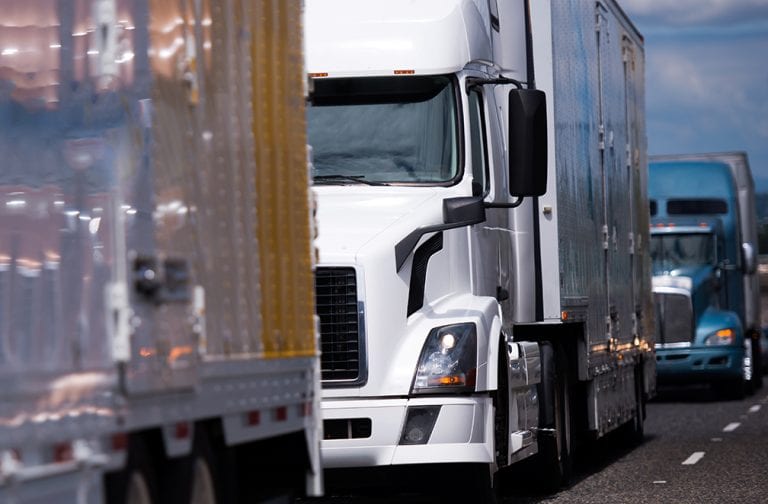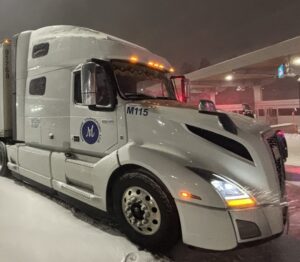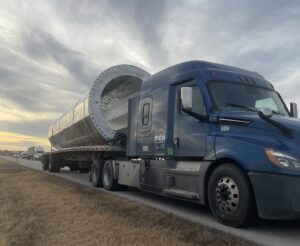WASHINGTON — The National Transportation Safety Board (NTSB) earlier this month released its 2021 Most Wanted List, and some of the items directly impact the trucking industry. The biennial list serves as an action guide to remind the transportation industry of what needs to be done for safety.
The 10 items on this year’s list include:
- Require and verify the effectiveness of safety-management systems in all revenue passenger-carrying aviation operations.
- Prevent alcohol- and other drug-impaired driving.
- Require collision-avoidance and connected-vehicle technologies on all vehicles.
- Eliminate distracted driving.
- Implement a comprehensive strategy to eliminate speeding-related crashes.
- Install crash-resistant recorders and establish flight data monitoring programs.
- Protect vulnerable road users through a safe system approach.
- Improve pipeline leak detection and mitigation.
- Improve rail worker safety.
- Improve passenger and fishing vessel safety.
Shortly after the NTSB release, the National Safety Council (NSC) compiled its top picks from the list, noting that several of the items align with the Road to Zero strategy to end roadway deaths, such as eliminating distracted driving, preventing impaired driving, requiring collision-avoidance/connected vehicle technology, stopping speed-related crashes and implementing a safe system approach.
“Despite the drop in miles driven in 2020, roadway fatality estimates were the highest they’ve been since 2007, as motor-vehicle crashes remain a leading cause of death for people of all ages. NSC recognizes some of the primary causes of crashes continue to be speeding, distraction, as well as impairment, and we know more than half of those killed in crashes are unbelted,” according to a statement from NSC. “To achieve zero traffic deaths by 2050, we need to embrace a safe system approach, implement and develop life-saving technologies, and double down on proven countermeasures and strategies.”
Trucking associations also weighed in on the NTSB’s picks.
“ATA appreciates the NTSB highlighting a number of safety risks on our highways — including distracted driving, speeding and impaired driving,” said Sean McNally, vice president of public affairs for the American Trucking Associations (ATA). “We share their goal of zero highway fatalities and finding effective strategies to reduce these types of behaviors for all road users would go a long way toward achieving that.”
David Heller, vice president of government affairs at the Truckload Carriers Association (TCA), said he is in support of the measures eliminating distracted driving.
“Distracted driving has certainly crept up on the boards of causation for accidents and is a serious endeavor right now that needs to be considered in the elimination of any distracted driving,” he said. “It should be first and foremost when it comes to accidents on the roadways today.”
Although Heller said he believes infrastructure priorities should have been included on the list, he is pleased about the introduction of assisted-driving technologies on NTSB’s list.
“One thing I’m certainly excited that’s on there are the technology aspects of collision avoidance and connected vehicle technologies,” he said. “I think that’s great, and we can take it a step further.”
Data generated by collision-avoidance and connected-vehicle technologies could provide useful in furthering legislation that will help promote the trucking industry, he said.
However, some associations, including the Owner-Operator Independent Drivers Association (OOIDA), are in opposition of collision avoidance measures and technologies on the list.
“In short, we oppose all proposed mandates that apply to our members,” said Norita Taylor, director of public relations at OOIDA. “That would include speed limiters, AEB (autonomous emergency braking) and collision avoidance.”
AEB, which brakes when sensors show slower-moving or stopped traffic ahead, is proposed as a part of the requirements for collision avoidance on NTSB’s list.
“The two technologies, AEB and adaptive cruise control, required for the 70 miles per hour allowance come at a significant cost, and it will be mostly large carriers that can afford to use them,” Taylor said.
“It’s not just the installation cost of these mandates. These systems can fail and require maintenance and other work leading to significant downtime and repair costs. Even worse, our members’ experience with AEB has shown that it doesn’t improve safety, but creates new challenges and dangers, such as false or unexpected system activation,” she continued. “These costs and challenges hit small businesses particularly hard, jeopardizing the existence of many of our members, who are often the safest drivers on the road.”
While OOIDA agrees that distracted driving is an issue, the technologies are a concern. Speed limiters, which would put a cap on the top speed of a vehicle, are a concern to OOIDA for control issues.
“We know that some companies use them to control the fuel consumption of their employee drivers,” Taylor said. “Otherwise, we know of no other benefit. We … have yet to see any proof that they reduce crashes or improve safety. We know of no carrier citing their use of speed-limiting devices as having improved their safety.”
Since 1990, the NTSB has used its Most Wanted List as the principal advocacy tool to build support for the implementation of NTSB-issued safety recommendations.
“Board members of the NTSB and our advocacy team continuously seek opportunities to communicate about items on our Most Wanted List,” said NTSB Chairman Robert Sumwalt. “As we begin advocacy efforts for 2021 to 2022, we call upon our advocacy partners to amplify our safety messages and help us bring about the safety improvements that will make transportation safer for us all.”
The NTSB’s 2021 to 2022 plan draws attention to more than 100 safety recommendations associated with the 10 items on the Most Wanted List. If implemented, these recommendations could save lives, reduce and prevent the number of transportation accidents and crashes, according to a statement from the NTSB.
Hannah Butler is a lover of interesting people, places, photos and the written word. Butler is a former community newspaper reporter and editor for Arkansas Tech University’s student newspaper. Butler is currently finishing up her undergraduate print journalism degree and hopes to pursue higher education. Her work has been featured in at least nine different publications.
















And one thing is for certain that is not mentioned, the condition of the roads. Potholes, rutted roadways, heat damaged surfaces, are the highest infrastructure causes to helping loose control of vehicle.
And they think these electronic gadgets will hold up to these roads? I had my modual for my ELD get out of alaignment and not work because of these roads
Funny how they never talk about cars and pickup drivers..driving is a privilege and not a right..if you get more that 2 tickets in a year or 3 in two years.. they should lose their license…many states have made marijuana legal so not only alcohol impaired but impaired by marijuana ..car drivers cause the most percentage of all accidents even when trucks happen to be involved…when will they put all of these electronic things on cars and pick ups? Or put speed limiters on them? You put speed limiters on trucks..very unsafe..and is a very stressful environment..and will not slow down or stop accidents.. plus who will drive when everybody hangs it up? Just like ELDs but. But. But they will make things safer…bull manure..drivers are being treated like a machine..work now…but I’m tired..WORK NOW…or sleep…but I’m not tired..SLEEP NOW…or you will be in violation..the log book was originally made to protect the driver..not be a danger to the driver..nor be a revenue enhancement for the government..